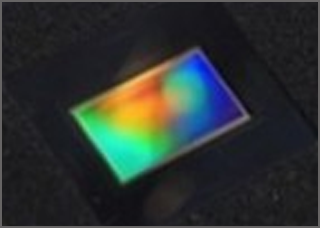High Definition (HD) CMOS Image Sensors for Broadcast Cameras
 American NTSC analog television and various derivative systems served the globe for seventy years. But in June of 2009, analog television broadcasting ended in the United States. After a decade of rollout and advancement, digital High-Definition television (HDTV) is nearly complete. It has required changes to every element in the broadcast string, from studio cameras to home receivers.
American NTSC analog television and various derivative systems served the globe for seventy years. But in June of 2009, analog television broadcasting ended in the United States. After a decade of rollout and advancement, digital High-Definition television (HDTV) is nearly complete. It has required changes to every element in the broadcast string, from studio cameras to home receivers.NTSC’s scanning analog cameras gave way to high-definition digital cameras using discrete pixels to capture light from the scene. Initially, these cameras used CCD sensors (Charge Coupled Devices), but today CCDs have given way to CMOS active pixel image sensors as the new camera standard. CMOS image sensors that are at least 1920 x 1080 pixels, or 2.1 million pixels, are needed for 1080p broadcast.
Over the past few years, the broadcast industry has been evaluating a move to a higher resolution system called 4K TV. Recently relabeled Ultra HD, this proposed standard showcases a resolution of 4096 x 2160 pixels, for a total 8.8 million pixels. Although there are bandwidth issues that will delay Ultra HD becoming a broadcast standard, display panels and cameras are already available to support Ultra HD.
One of the earliest 4K cameras was developed by NHK, the Japanese broadcast lab recognized for its work in next-generation broadcast standards. Forza Silicon developed the CMOS image sensor for this camera under contract to NHK. These systems operate at a very fast frame rate, making them ideal for fast action recording, like sports and racing coverage.
More recently, Forza Silicon collaborated with NHK to create a new camera for an 8K system, which is now known as Super Hi-Vision. The Forza CMOS image sensor has over 33 megapixels at 60 frames per second (60 fps). Pixel size for this remarkable image sensor is just 3.8 microns, allowing a compact camera capable of studio and field applications.
 Forza Silicon’s design work includes very high-resolution CMOS image sensors for cinema applications. These feature rolling mode electronic shutters for high action work or global. Forza’s high dynamic range (HDR) pixel designs are increasingly sought for maximum capture range and expanded post-production options.
Forza Silicon’s design work includes very high-resolution CMOS image sensors for cinema applications. These feature rolling mode electronic shutters for high action work or global. Forza’s high dynamic range (HDR) pixel designs are increasingly sought for maximum capture range and expanded post-production options.Related Websites:
NHK Tests 8K at Winter Olympic Games
